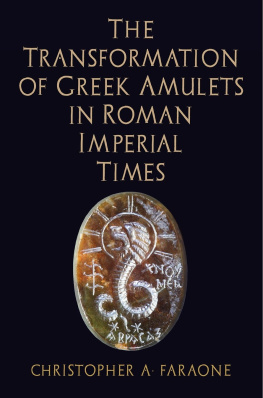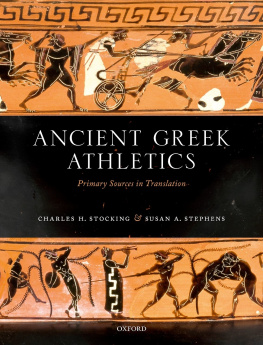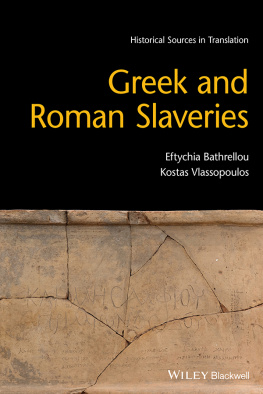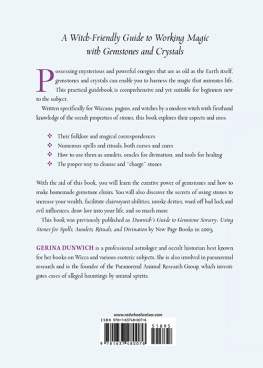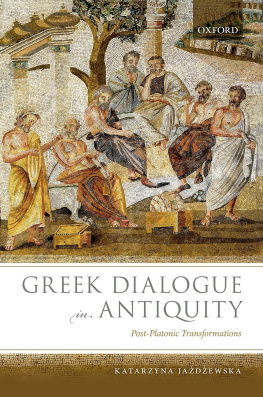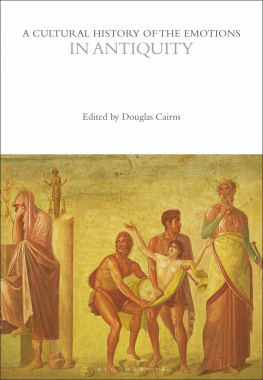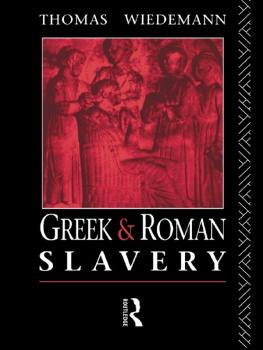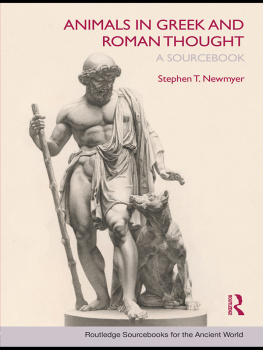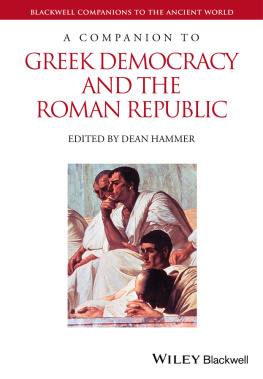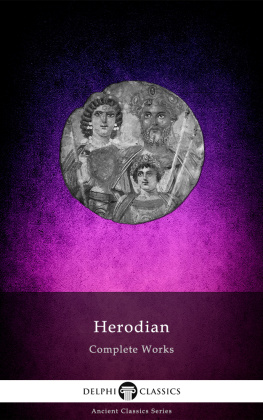| The Transformation of Greek Amulets in Roman Imperial Times |
| Christopher A. Faraone |
| Libre Dionysia (04/2018) |
|
| Tags: | Esoteric, History, Non-Fiction |
| Esotericttt Historyttt Non-Fictionttt |
The era of the Roman Empire was distinguished by an explosion of images and texts in a variety of media--metal, papyrus, mosaic, gemstone--all designed to protect, heal, or grant some abstract benefit to the persons who wore them on their bodies or placed them in their homes. In the past scholars have explained this proliferation of readily identifiable amulets by a sudden need for magic or by a precipitous rise in superstition or anxiety in this period, connected, perhaps, with the internal breakdown of Greek rationalism or the migration of superstitious peoples from the East.
Christopher A. Faraone argues, instead, that these amulets were not invented in this period as a result of an alteration in the Roman worldview or a tidal wave of "oriental" influence, but rather that they only become visible to us in the archaeological record as a result of a number of technical innovations and transformations: the increased epigraphic habit of the Imperial period, the miniaturization of traditional domestic amulets, like the triple-faced Hecate, on durable gems, or the utilization of newly crafted Egyptianizing iconography. In short, it is only when explicitly protective or curative texts, or strange new images, are added to traditional Greek amulets, that modern observers realize that these objects were thought to have the power to protect or heal all along. The real question addressed by the book, then, is not why we can identify so many amulets in the Roman Imperial period but, rather, why we have failed to identify them in artifacts of the preceding centuries.
Featuring more than 120 illustrations, The Transformation of Greek Amulets in Roman Imperial Times is not only a tremendous resource for those working in the fields of ancient magic and religion but also an essential reference for those interested in the religion, culture, and history of the ancient Mediterranean.
Copyright 2018 University of Pennsylvania Press
All rights reserved. Except for brief quotations used for purposes of review or scholarly citation, none of this book may be reproduced in any form by any means without written permission from the publisher.
Published by
University of Pennsylvania Press Philadelphia, Pennsylvania 19104-4112 www.upenn.edu/pennpress
Printed in the United States of America on acid-free paper 10 9 8 7 6 5 4 3 2 1
Library of Congress Cataloging-in-Publication Data Names: Faraone, Christopher A., author.
Title: The transformation of Greek amulets in Roman imperial times / Christopher A. Faraone.
Other titles: Empire and after
Description: 1st edition. | Philadelphia : University of Pennsylvania Press, [2018] | Series: Empire and After | Includes bibliographical references and index.
Identifiers: LCCN 2017046034 | ISBN 978-0-8122-4935-4 (hardcover : alk. paper) Subjects: LCSH: Amulets, Greek. | Magic paraphernaliaGreece. | Inscriptions, Greek. Classification: LCC DF129 .F37 2018 | DDC 133.4/40938 LC record available at https://lccn.loc.gov/2017046034
To my friends Roy Kotansky, Attilio Mastrocinque, and Arpd Nagy, who share my fascination with amulets
Conversion, 2021, Libre Dionysia
Libre Dionysia - Making texts available and e-reader friendly. All ePubs are manually generated and edited from sourced PDF files or physical books.
Preface
This study has a precursor of sorts, a book written more than a quarter century ago about talismanic and apotropaic statues in ancient Greece and devoted mainly to the protective role of such images in the ancient Greek city. That book was well received, but some reviewers were surprised that it did not contain a single illustration. And indeed, I must admit that at that time, because of my training and orientation as a philologist, I was focused almost exclusively on literary, rather than archaeological, evidence and that it did not occur to me to include any photographs or drawings. This volume, as the gentle reader will discover, has more than a hundred illustrations, a change that reflects both a great benefit and a great risk. Beneficial, I hope, is the way it brings together for the first time a wide array of art-historical, archaeological, papyrological, epigraphical, and literary sources to bear on the subject of ancient Greek amulets; risky, because each of these scholarly traditions and each of the many subfields within them involve a bibliography and an expertise that is beyond the human powers of a single scholar. There will, I am sure, be some details missed or evidence wrongly assessed, but my hope is that the experts, many of whom I thank below for their help, will overlook such lapses and errors and enjoy the wider and, I hope, richer panorama sketched in these pages. This book has three thematic sectionsArchaeology, Images, and Textsthat could perhaps be read in isolation, the first by archaeologists, the second by art historians, and the third by philologists, but I would strongly advise against proceeding in this manner, because such an approach would simply reify these traditional academic boundaries and undermine or at least ignore the central argument of this study that the popularity of easily identifiable amulets in the Roman period reflects a long process of accretion, whereby the traditional shapes and media surveyed in the first section begin in the imperial period to take on images and texts that tell us unequivocally and for the first time that these shapes and media were being used all along as amulets.
This volume began to take shape in Paris, when in the autumn of 2011 at the invitation of John Scheid, I gave four lectures at the Collge de France, each of which eventually became important parts of Chapters 1, 2, 4, and 8.1 cannot thank John enough for the invitation, which helped focus what was at the time a somewhat inchoate project, and I thank the audience for their questions and especially for their skepticism about some of the arguments that I eventually overhauled or abandoned. Roughly two years later I returned to Paris to take up a fellowship at the Institut dtudes Avances de Paris, where, thanks to the collegial atmosphere created by Gretty Mirdal and Simon Luck, I finished a full draft of all of the internal chapters. Gratitude is also due to the University of Chicago s Paris Centre, especially to Robert Morrissey and Sebastien Greppo, for various kinds of additional support that made my year in Paris especially productive, and to Franois Lissarrague, who kindly lent me his desk, computer, and scanner at the Gernet-Glotz Library. I had, in fact, been working on individual sections of this book as early as the autumn of 2008, when, as a fellow at the Institute of Advanced Studies at Princeton, I wrote a long article on metrical incantations inscribed onto amulets that eventually became a large part of Chapter 8.1 am grateful to Heinrich Von Staden for conversation and encouragement during my time at the Institute, as well as to the other fellows and especially to the librarians for their help. In the winter of 2009, as a research fellow at the Getty Villa Museum in Malibu and with the guidance of Ken Lapatin and Franois Lissarrague, I began to make some first tentative steps toward thinking about the images on ancient Greek amulets and how one might go about interpreting them. It was there that I first presented the material that now makes up the second half of Chapter 4.
Throughout the past eight years, I have been happily associated with the Campbell Bonner Magical Gems Database, which continues to flourish at the Muse des Beaux Arts in Budapest under the wisdom and energetic leadership of Arpd Nagy, whose keen eye and friendship have also been crucial to the evolution of the volume at hand. Attilio Mastrocinque, another dear friend and associate of the Database, taught me how to photograph these magical gems during a marathon visit to the basement of the Kelsey Museum in Ann Arbor, Michigan. His exquisitely photographed and commentated corpora of the magical gems in the major Italian collections (2003 and 2008) and in the Cabinet des Mdailles in Paris (2014) were timely and crucial research tools for this volume. I cannot thank him and rpd enough, as both read and commented on the entire manuscript and saved me from numerous errors. Other associates in the group include Simone Michel-von Dungern, author of the marvelous 2001 edition of the magical gems in the British Museum and an indispensable 2004 study of all the extant gems; Erika Zwierlein-Diehl; Vronique Dasen; Jeffrey Spier; and Richard Gordon. To Richard I owe additional thanks for his numerous and penetrating studies on ancient magic and even more so for his skepticism and goodwill in commenting on my work either from the audience or on the margins of the page.

